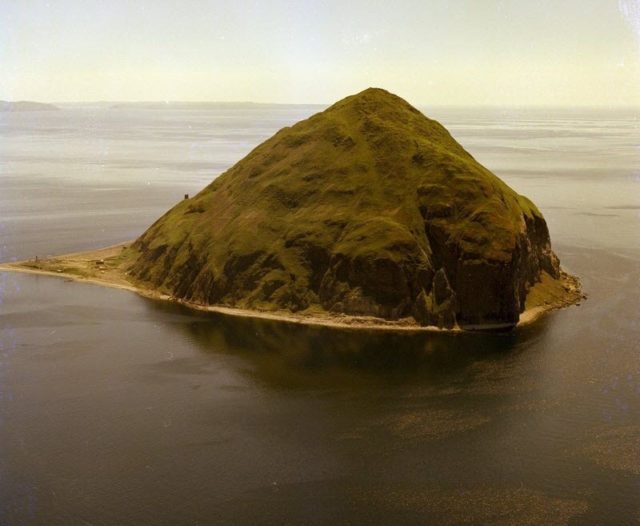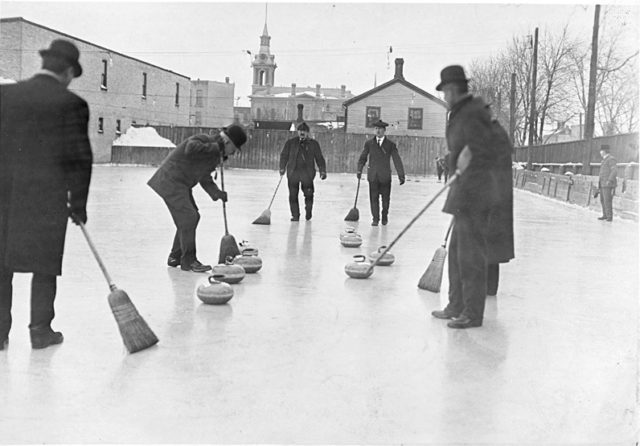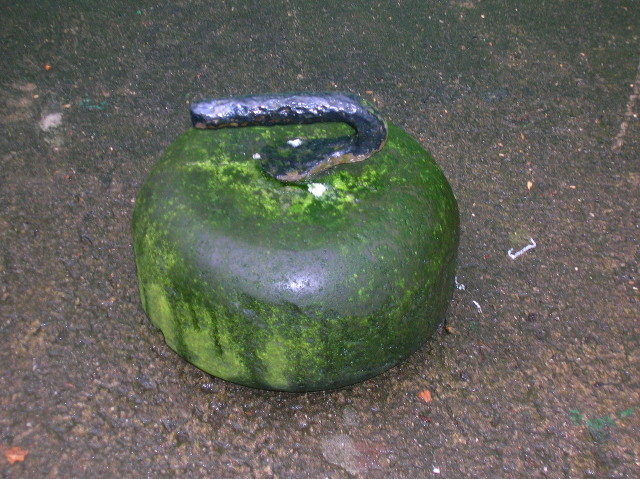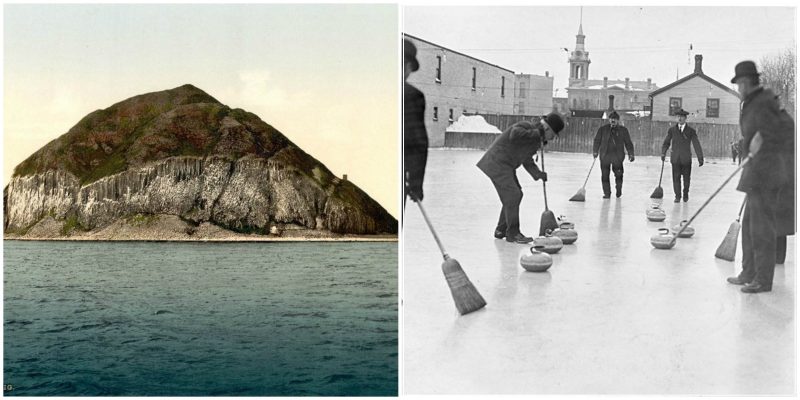This tiny island, with its head poking out of the Firth of Clyde, is around 16 kilometers from mainland Scotland. The island has the nickname “Paddy’s Milestone,” thought to have come about as the island is halfway on the sea-ferry route between Glasgow and Belfast. This route was followed by Irish laborers (paddy being an informal, sometimes derogatory, term for an Irishman) going to Glasgow to seek work.
Formed as a plug in an ancient volcano, the small island has had a rather checkered history, especially considering its size. In the 16th century, the Hamilton family built a castle, the ruins of which stand on the eastern side of the island, to protect it from being invaded by King Philip II of Spain.

During the Scottish Reformation, in 1597, Hugh Barclay, a Catholic supporter, took possession of the island intending to use it as a station for the invasion of Scotland by the Spanish, the purpose of which was to re-establish Scotland as a Catholic nation under the jurisdiction of the Pope. Andrew Knox, a Protestant minister, uncovered the plot and it is thought that Barclay committed suicide by drowning in the waters off the island. The island then fell into disuse until the 18th and 19th centuries when it was used as a prison. In 1831, the Earl of Cassilis was made a marquis, and he took his name from the island, which was his property, becoming the First Marquis of Ailsa.
Thomas Stevenson built the island’s lighthouse from 1883 to 1886, and it is now in possession of the Northern Lighthouse Board. In 1990 the lighthouse was automated, removing the need for a permanent lighthouse keeper on the island, and in 2001 the lighthouse was converted to solar power. Since the last lighthouse keeper left in 1990, the island has been uninhabited by humans.
Ailsa Craig has been a haven for sea birds for millennia, but a plague of rats decimated the young of many seabirds, especially puffins, and gulls. It is not known exactly how the rats arrived on the island, but they could have come on the boats resupplying the lighthouse, or there have been several shipwrecks around the island, and the rats could have swum ashore from any of these. In 1991, tons of rat poison were distributed around the island, and the entire rat population was destroyed. The last live rat was seen on the island on 15th April 1991, near the summit. Since then no rats have been seen on the island.

The other claim to fame that the island has is that almost two-thirds of all the curling stones used in the world today have been carved from the granite that occurs on the island. The granite, known as Ailsite, a type of riebeckite, is used to make the 20-kilogram curling stones used by all the top level players and all the stones used at the Winter Olympics since 2006 have been made from the Ailsa granite.
The granite is quarried on the island by a company called Kays of Scotland, who have exclusive rights to island’s primary resource. They are only permitted to quarry once in ten years and removed 2,000 tons of granite in 2013. This infrequent harvest is to ensure that the nesting birds are disturbed as little as possible. The best quality stones are manufactured from Blue Hone granite, which absorbs very little water, so it does not erode quickly by water freezing and melting thus damaging the stone. Ailsa Craig Common Green granite is of a lower quality and stones manufactured from it are not as robust as those manufactured from Blue Hone.
Curling is a game played on flat ice. It consists of two teams, each with four players, who each get a turn to push the 20 kilo stone along the ice to try and place it as close as possible to the center of a target painted onto the ice. The target consists of four concentric circles with the center circle being a solid dot. Points are scored by the team who’s ‘stones’ lie closest to the center. It requires considerable skill to judge the amount of pressure to apply when pushing the stone as the ice offers little resistance, and the stones slide very easily. Curling is one of the fastest growing ice sports.

In May 2001, the Marquis put the island up for sale at £2,500,000, but with no takers, the price was lowered to £1,500,000. The island has been leased to a British conservation charity, the RSPB, and is now a haven for sea birds. With the eradication of the rats, puffins and gulls are returning in huge numbers to breed on the island.
In the early 1990s, four cottages, a shed and a small area of land on the island was bought for £85,000 by a Scottish businessman, Bobby Sandhu from the Northern Lighthouse Board.
